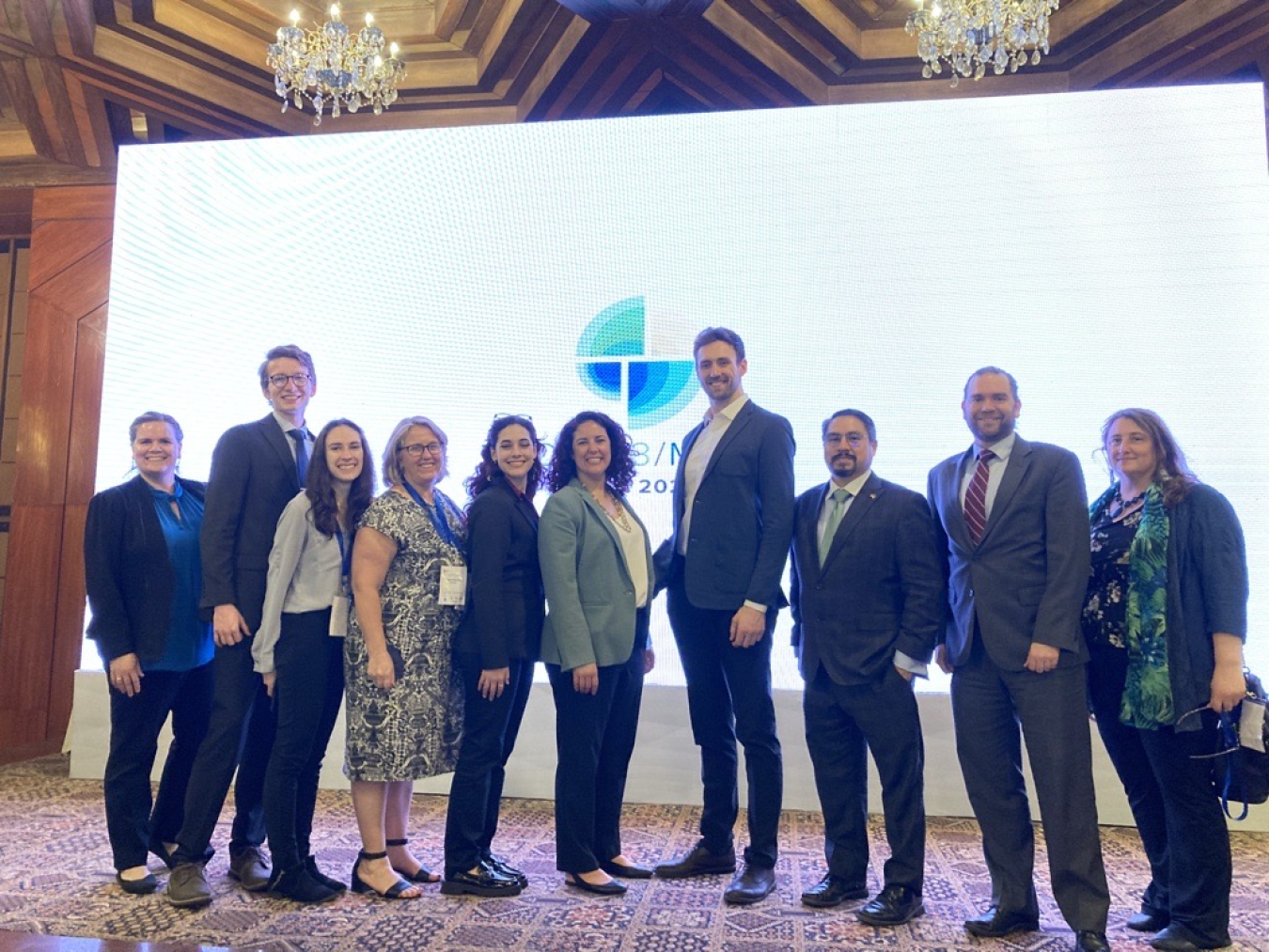This April, Clean Energy leaders from nearly 30 countries and multiple international organizations convened in New Delhi, India under the Clean Energy Ministerial’s (CEM) Senior Officials’ Meeting and Mission Innovation’s (MI) Annual Gathering.
Office of International Affairs
April 25, 2022This April, Clean Energy leaders from nearly 30 countries and multiple international organizations convened in New Delhi, India under the Clean Energy Ministerial’s (CEM) Senior Officials’ Meeting and Mission Innovation’s (MI) Annual Gathering. The U.S. Department of Energy’s Principal Deputy Assistant Secretary for International Affairs Julie Cerqueira led the U.S. delegation to this global event.
Participants set out a collaborative path to turn ambition into action in advancing CEM and MI goals by the Clean Energy Ministerial and Mission Innovation Ministerial (CEM13/MI-7) in Pittsburgh this September. Together, CEM and MI combine government and private sector actions to increase the pace and scale of the clean energy technology innovation to deployment to business uptake pipeline. This work will help unlock a $23 trillion global clean energy market.

The twenty-three MI members kicked off the week, setting out clear plans to achieve milestones in the research Missions by September, to increase private sector engagement, and to increase CEM and MI collaboration to quickly advance the innovation to deployment continuum. Missions plan to show progress through “sprint” projects and Action Plans that they will announce at the Ministerial. MI Members also plan to release National Innovation Pathways to ease collaboration, and to set out a plan to track and review progress to ensure forward movement.
The CEM Senior Officials’ Meeting convened members, and other participants in the CEM community (private sector partners, multilateral organizations, and NGOs) to identify practical, tangible, and ambitious actions that will create an ecosystem for clean energy deployment. From bioenergy to CCUS, hydrogen to power system integration, members dived into technical solutions to speed deployment and drive down costs of clean energy technologies that could reduce global emissions.
While CEM and MI are separate organizations with unique members and participants, they hold a shared goal to accelerate a clean energy future to meet the world’s climate and energy needs. Together, they represent actors across the entire innovation to deployment spectrum. New Delhi was a watershed moment for these organizations, as they held unprecedented joint meetings and discussions to explore synergies and opportunities to pursue shared goals in their bodies of work. Members expressed their determination to strengthen collaboration and implementation.
Both organizations also agreed that the energy transition must occur in a just, equitable, and inclusive fashion that leaves no one behind.
We invite you to join the U.S. Department of Energy and member countries in Pittsburgh for the CEM13/MI-7 Ministerial. The Joint Ministerial’s location in America’s Steel City showcases how determination, hard work, and innovation can transform state and local economies to meet our climate and energy needs.
At CEM13/MI-7, we will work to realize an unprecedented pace and scale of clean energy innovation and deployment and will marshal the forces of the entire clean energy community for collaborative action. A low-cost, zero-emissions energy future is only possible with a united, strengthened, energized global community committed to ambitious action.

